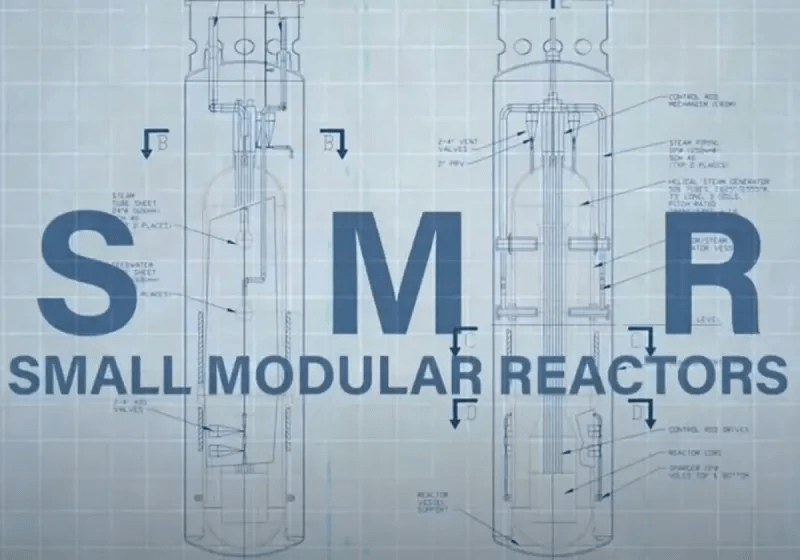The world is facing a pressing challenge: meeting the increasing demand for clean and reliable energy while reducing greenhouse gas emissions. In the pursuit of sustainable solutions, small modular reactors (SMRs) have emerged as a promising technology. These compact nuclear reactors offer numerous advantages that can revolutionize the energy sector, providing a cleaner, safer, and more flexible source of power.
Several countries are currently developing SMR designs:
In the United States, NuScale power received approval from the U.S. Nuclear Regulatory Commission (NRC) for its SMR design.
Russia has developed the RITM-200 used in icebreakers and the ABV-6M for remote power generation. These reactors can operate for years without refueling, ensuring long-term energy independence in remote and challenging environments.
China has also been actively developing SMRs, with a focus on high-temperatures gas-cooled reactors like the HTR-PM. (High-Temperature Gas-Cooled Reactor Pebble-bed Module). These reactors have the potential to provide clean energy for decades and support the country’s growing energy demands.
Argentina has been working on the development of the CAREM (Central Argentina de Elementos Modulares) SMR, a small pressurized water reactor that demonstrates the versatility of SMRs by providing both electricity and desalination capabilities.
South Korea has developed its own SMR design called SMART (System Integrated Modular Advanced ReacTor), and is already exploring export opportunities for this technology.
Let’s explore the advantages of SMRs and why they are gaining momentum in the global energy landscape.
1. Enhanced Safety
Safety is paramount when it comes to nuclear energy, and SMRs are designed with safety in mind. One key advantage is their smaller size, which reduces the potential consequences of accidents. SMRs employ innovative passive safety features that can shut down the reactor automatically in the event of a malfunction, eliminating the need for operator intervention. These features make SMRs less vulnerable to catastrophic accidents and enhance public confidence in nuclear energy.
2. Reduced Environmental Impact
Compared to traditional, large-scale nuclear reactors, SMRs produce significantly lower environmental impacts. They generate minimal greenhouse gas emissions during operation, helping combat climate change. Additionally, their compact size and modular construction allow for more efficient use of resources and reduced land requirements, minimizing habitat disruption and environmental footprints.
3. Flexibility and Scalability
One of the most significant advantages of SMRs is their scalability. Unlike traditional reactors that require massive infrastructure and long construction times, SMRs can be manufactured in factories and transported to the site. This modular approach reduces construction costs and allows for incremental capacity expansion, making them suitable for a wide range of applications. SMRs can serve as a steady baseload power source or complement renewable energy sources by providing flexible and on-demand electricity generation.
4. Grid Resilience
SMRs can enhance the resilience of the electric grid. Their ability to provide a stable source of power, even in adverse conditions, makes them a valuable asset during extreme weather events or natural disasters. In regions prone to power disruptions, SMRs can serve as a reliable backup source, ensuring continuous electricity supply to critical infrastructure.
5. Fuel Efficiency
SMRs are highly fuel-efficient, utilizing nuclear fuel more effectively than traditional reactors. This efficiency not only reduces fuel costs but also generates less nuclear waste. Moreover, some SMRs are designed to use alternative fuels like thorium, which offers additional sustainability benefits.
6. Long Operational Lifespan
SMRs are designed to have a long operational lifespan, often exceeding 40 years. This longevity ensures a stable source of low-carbon electricity for decades, contributing to long-term energy security and stability.
7. Economic Benefits
The modular design and factory manufacturing of SMRs result in cost savings compared to traditional reactors. They require smaller initial investments and offer faster construction times, reducing financing risks. Additionally, SMRs can be deployed in remote or off-grid locations, providing affordable and clean energy access to underserved communities.
Small modular reactors represent a significant advancement in nuclear technology, offering numerous advantages that address some of the most pressing challenges facing the energy sector today. Real-world success stories from countries like the United Kingdom, Canada, Argentina, the United States, Russia, China, and Indonesia highlight the potential of SMRs in shaping a sustainable energy future. As we strive to transition to a low-carbon economy, SMRs are poised to play a pivotal role in meeting our energy needs while mitigating climate change. It is essential to continue research, development, and deployment efforts to unlock the full potential of SMRs in the global energy landscape.




